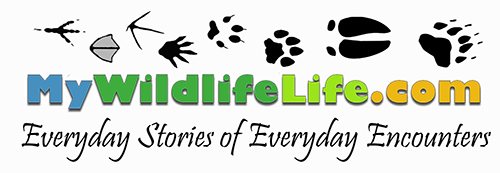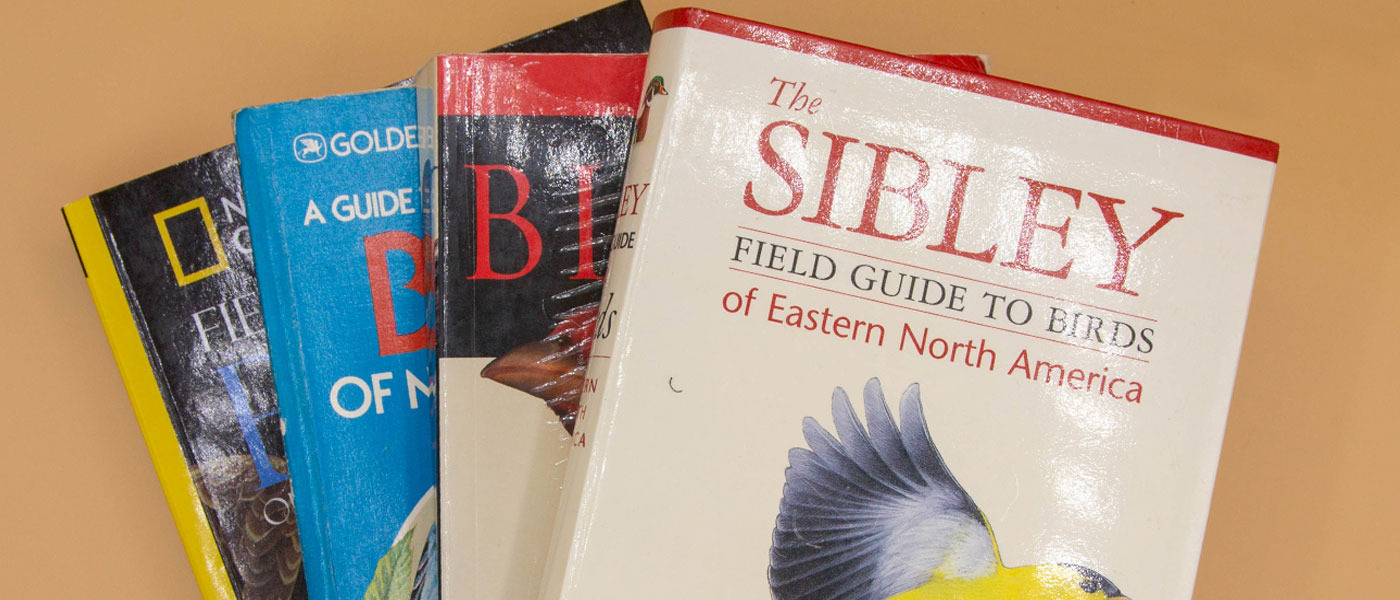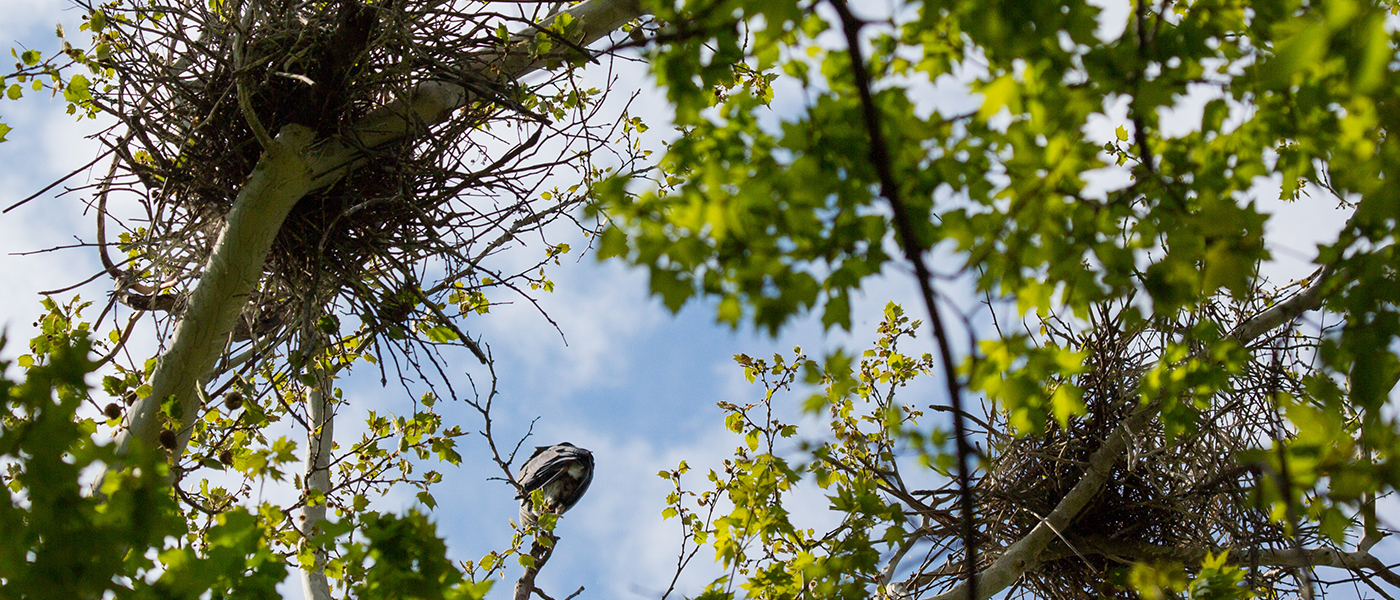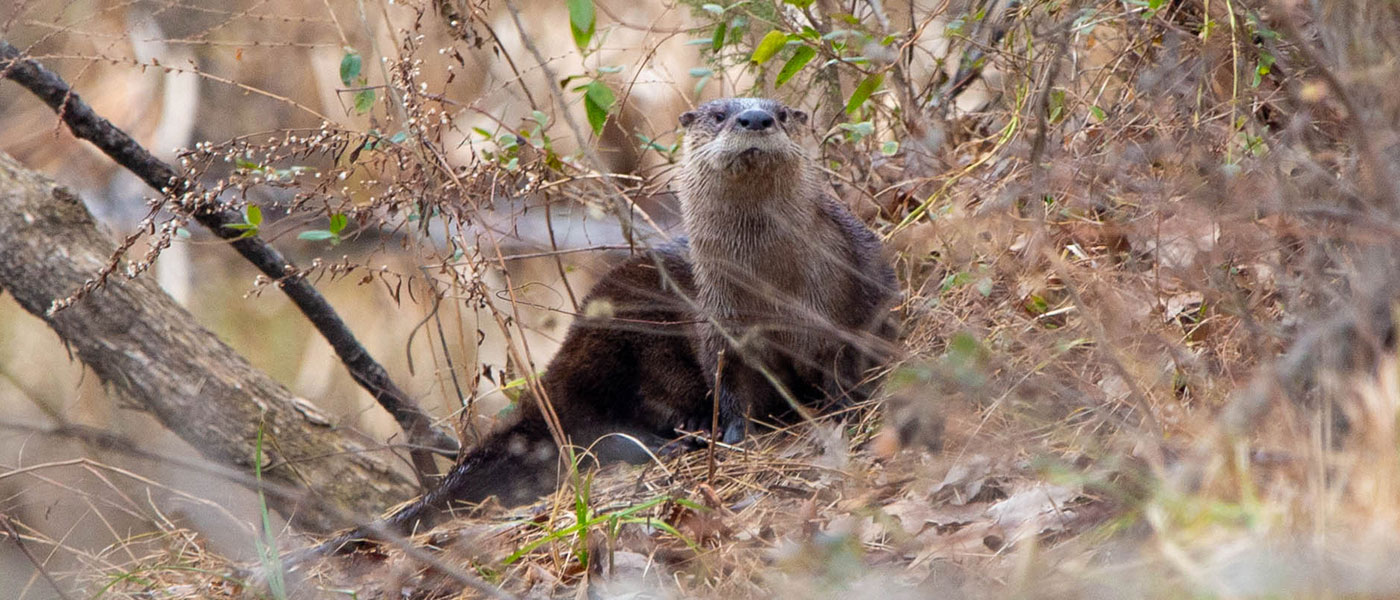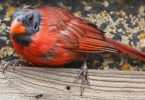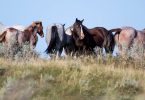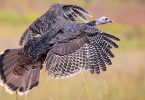Every lover of wildlife requires a good bird book but knowing which one to purchase can become a chore. Let me start by saying every book has an audience and every person has a different knowledge level and a different preference. So keep that in mind when reading this review or any reviews on say Amazon or other places. The choice is a personal one but all books have their pros and cons.
I’ll show you the ones I have collected over the years and share what I like and don’t like about each. Hopefully, this will help you decide which one might be the best match for you. I’ll also talk about the Audubon mobile app so you can compare that as well.

The four books I’ll talk about are the classic Golden Field Guide Birds of North America, National Geographic Field Guide to the Birds of North America, The Sibley Field Guide to Birds of Eastern North America, and Kaufman Field Guide to Birds of North America.
I’ll show you examples from each book for comparison including the same species of the Common Goldeneye so you can see for yourself the differences in the details of each book.
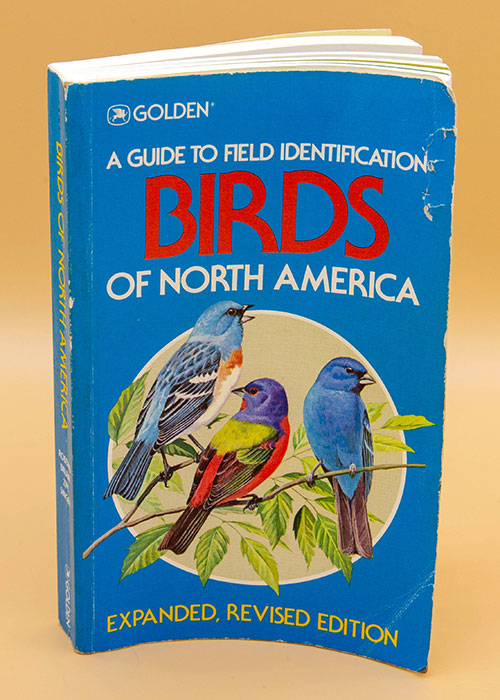
Let’s start with the classic Golden Field Guide Birds of North America. My grandparents and parents had this guide so it’s getting a nostalgia vote for sure. It’s was originally published in the mid-1960s and has kept some details of the same basic look ever since.
This book features detailed drawings of each gender and in most cases the immature as well. This guide offers a few group comparison charts can help narrow down the more difficult to identify birds like the warbler family.
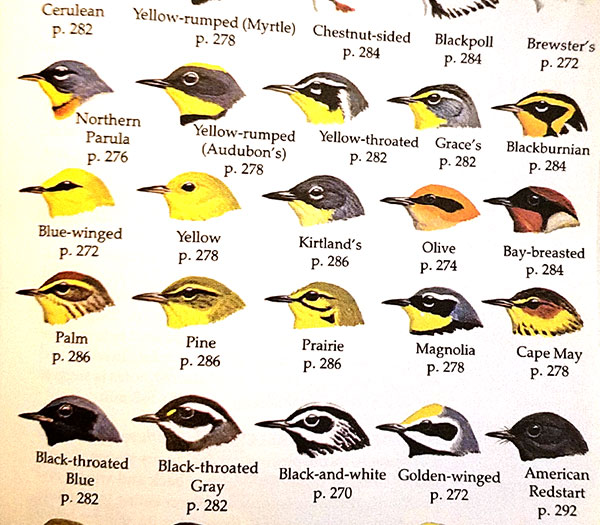
The guide shows range maps as well as minor details about each bird that might help in the identification process. The size is a good size for carrying in a backpack or car glove box but not what I would call a pocket guide.

One unique feature of this guide is a silhouette reference chart located at the beginning of different family groups. It is a quick reference to the size and shape of varieties that are easily confused. It can be handy to have if you don’t see what you are looking for as it will lead you down other possible identification routes.
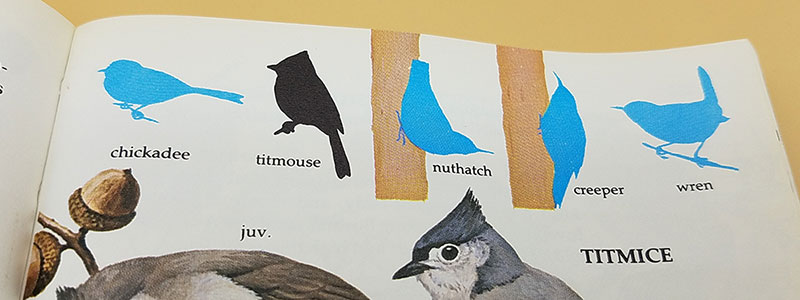
When looking more into this book please keep in mind that Golden Publishing makes two types of reference books. Golden Guides which are more of a kids’ approach to guide books and a great intro to birds and other reference guides. The book I’m talking about is from the Golden Field Guide series which is a more detailed guide book. This more adult series will always say “A Guide to Field Identification”.
PROS: Easy to carry. Drawings are realistic. Quick reference chart on some pages.
CONS: I have found that the range maps are not the most accurate but I do have an older copy. I wish there were more quick reference charts on top of pages as I find it useful when I’m stumped which is often. There also are not very many comparison charts and those can be helpful. No quick section reference on pages.
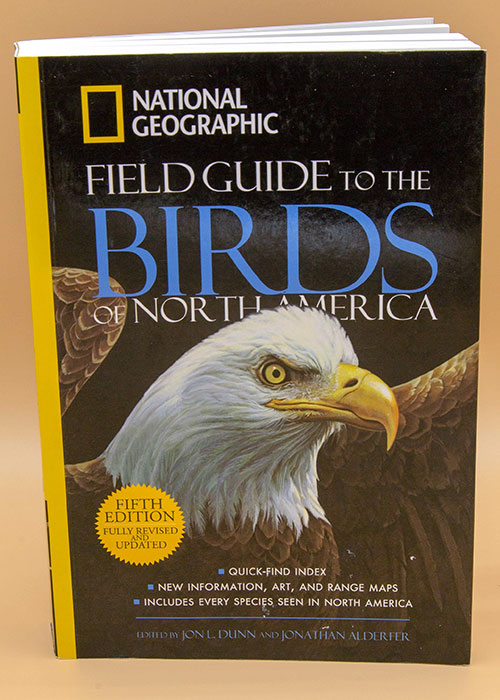
Next, let’s look at National Geographic Field Guide to the Birds of North America. First off, of the four guide books mentioned this one is the largest. Its size is larger in dimensions and number of pages so it’s a good bit heavier than any of the others. For that reason, I do not carry this one with me on outings but rather use it at home with photos I take while out.
This book like all the others offers range maps as well as minor details for identification. This book also has edge index cuts on the outside of the book which does help get you to where you want a little quicker.

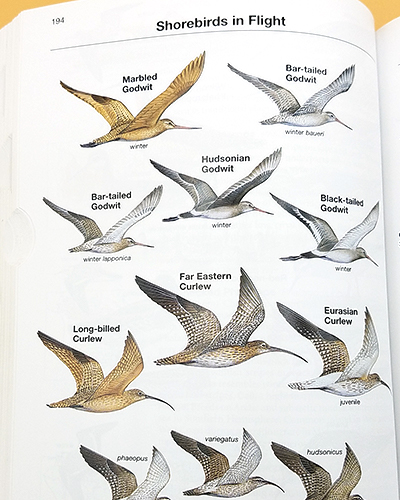
What I like about this bird guide is the very detailed larger drawings and the way they handle comparison charts is really useful.
When you’ve narrowed identification down, this book is great for getting to the final conclusion. The written details are also a little more which also helps.
PROS: Size and details in the drawings. In-flight comparison charts.
CONS: The size and weight of the book make it not as portable as the others.
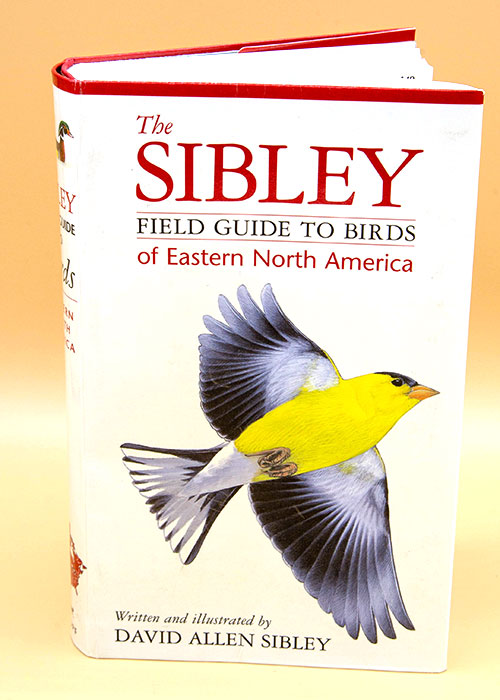
Next up, The Sibley Field Guide to Birds of Eastern North America. This guide’s drawings are very similar to the National Geographic guide however the layout is completely different from all the others. This guide features the imagery and details all on the same page. This layout seems to make the imagery a little smaller than all the others as they have to keep everything in the species square but they do still include extra imagery when needed. However, they are the only guide that adds extra details in the drawing area with text that points out distinct things to look for. This can be a great added bit of information to have when looking at the drawing itself.
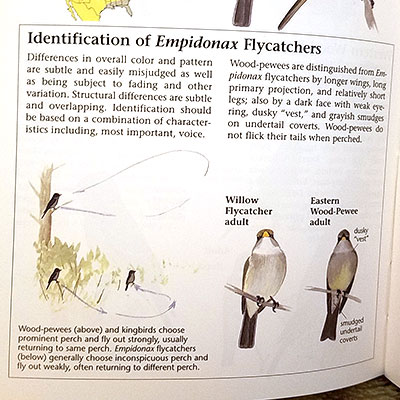
This guide also has extra info blocks within the book. These blocks can be really useful in not only the identification of species but also provide interesting facts.
Just like the other guides, there are comparison chart pages but the drawings are fairly small so you will find yourself still flipping pages back and forth between species drawings a good bit.

The Sibley Field Guides come in many forms. There are complete guides that are more like an encyclopedia than a bird book. They have guides broke down to regions like this one is only the eastern United States.
PROS: Extra detail pointer on the drawings. Range maps seem more accurate. Extra info areas throughout the book.
CONS: Smaller drawings. It doesn’t offer a quick section finder.
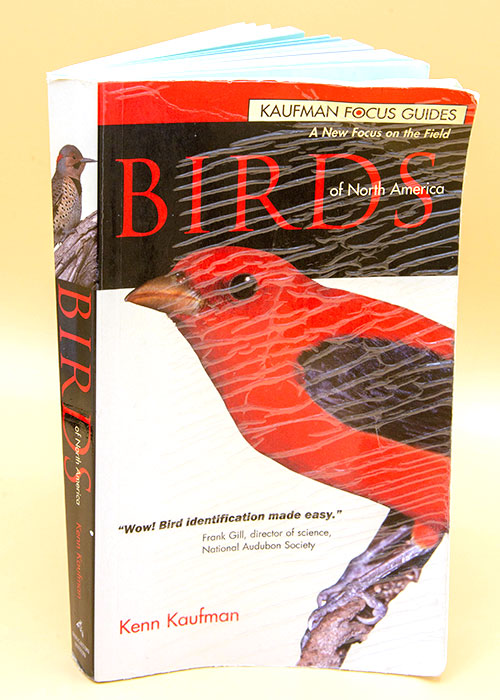
And lastly, let’s look at the Kaufman Focus Guides Birds of North America. This guide is unique in one very obvious way, it uses real photos instead of drawings. It’s laid out with the imagery on the right-side pages and details on the left.
This guide book is very similar to the Golden Field Guide so is very easy to carry in a backpack or car glovebox.
This guide is great for a beginner because the use of photos seems to offer a more relatable process to the identification of a bird. There are range maps and additional details. The range maps are fairly small but honestly, they don’t need to be that much bigger. They also offer a quick section reference color guide on the edge of the pages which helps you find family groups.
One drawback is that there are no comparison charts in this guide like all the other books. However, the real photos show actual stances of the birds which some times seems better than drawings.

PROS: Real photos. Size is very portable.
CONS: No comparison charts.
So what can you take from all this? You can take that it’s a personal choice. The Golden Guide and the Kaufman are easiest to carry around. The National Geographic guide has large drawings but not a really portable book. Sibley’s offers lots of great guides with detailed drawings but the drawings are noticeably smaller. And then there’s Kaufman, whose real photos offer something none of the others do.
So what do I prefer, well as you can see I have four bird books. I keep the Golden and Kaufman in my car glove-box along with a pair of binoculars. I find that these two together make a good combo for comparisons. But for those birds I can’t identify on the scene, I usually take a picture with my camera, come home and take out the National Geographic and Sibley guides. They seem to have the most detail for once you narrow it down.
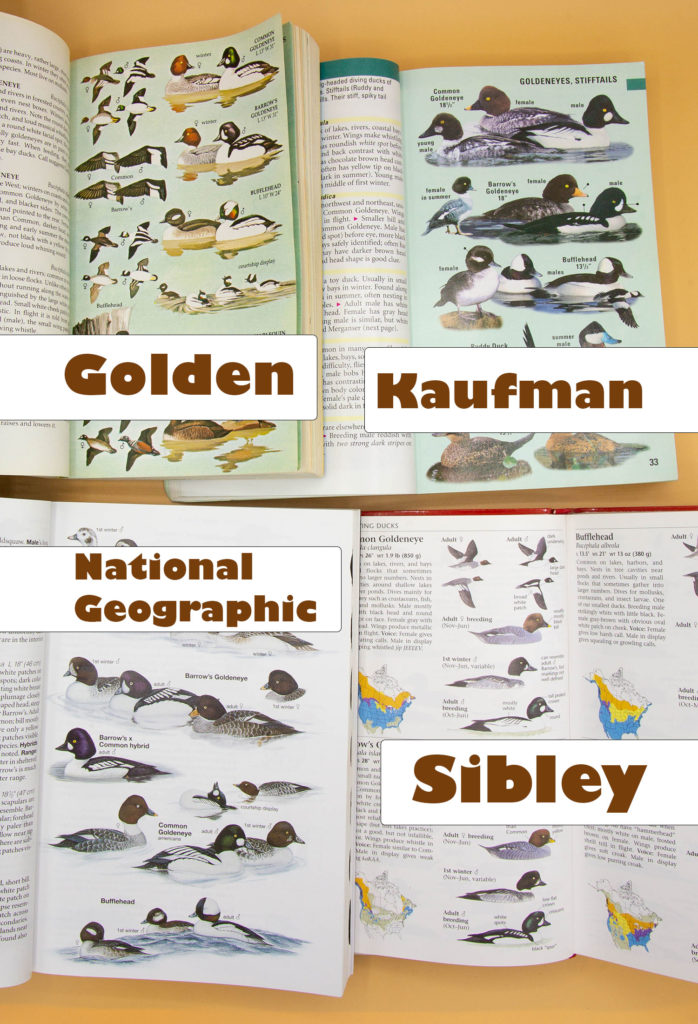
But let me throw in another option. I also use the Audubon mobile app a good bit. I love that the app has a ‘similar’ section in the photos. So this is great to say “nope not that but could be that”. They offer a way to instantly see multiple photos of the species. However, one drawback is that it’s not easy to find a starting point on the app so I’ll use the book guides to narrow it down and then the app to nail it down.
I guess if I could only have one guide I would have to go with The Sibley Guide as it’s a medium size but packed with detailed drawings but I honestly can’t imagine me ever having only one guide. It’s almost a must to compare your findings to multiple sources to make sure you are right as some times bird identification is very difficult and having more references does help considerably.
Also, I want to note that all of these books have been updated from the ones I have, but the basics of each have not changed.
If you are interested in purchasing any of these, here are quick links for your use. These are Amazon Affiliate links so I will make a little money to keep this blog going if you purchase using them.
Golden Field Guides Birds of North America: A Guide To Field Identification – Amazon Affiliate link
National Geographic Field Guide to the Birds of North America – Amazon Affiliate link
The Sibley Field Guide to Birds of Eastern North America – Amazon Affiliate link
Kaufman Field Guide to Birds of North America – Amazon Affiliate link
I hope you find this information useful and you get the same joy I do when you know for sure that you’ve identified something correctly. Let me know in the comments if you want to know anything else about these guides.
Comment on what bird guide you choose even if it’s not one of these four, maybe I’ll add one you like to my collection.
Happy birding!
